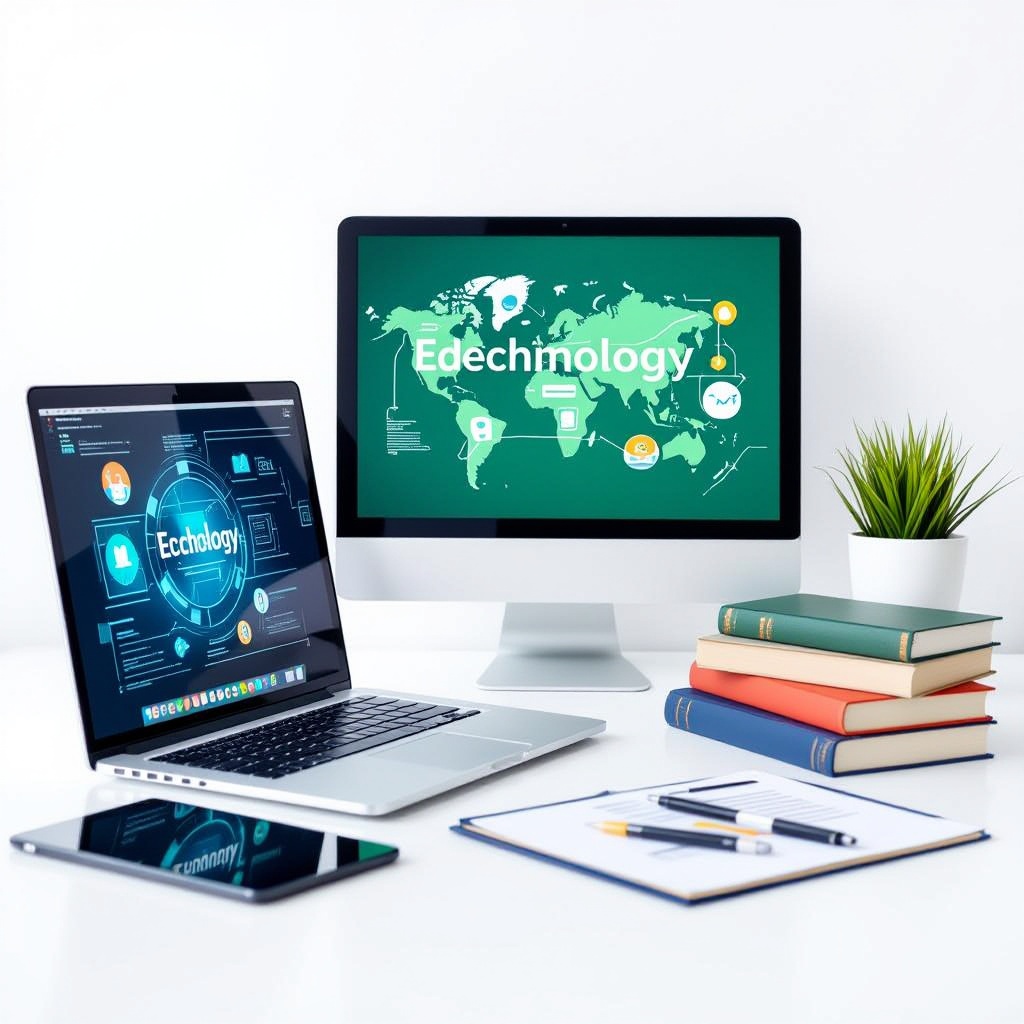Qatar is transforming its education landscape through the integration of AR and VR technologies in classrooms. These tools are enhancing STEM learning, advancing gamified education, and supporting cultural preservation. Such innovative approaches not only foster student engagement and problem-solving skills but also align with the Qatar National Vision 2030, placing the country at the forefront of global educational technology. Key Takeaways Virtual laboratories provide safe and scalable platforms for conducting science experiments, enriching both learning and engagement. Gamification strategies in Qatari schools have reshaped math and science education, significantly boosting student participation. AR and VR are revitalizing Arabic language skills and cultural engagement through storytelling and virtual field trips. Embedding digital tools in classrooms strengthens Qatar’s path toward a knowledge-based economy, in line with National Vision 2030. Qatar’s investment in immersive technologies sets new benchmarks in education worldwide, positioning the country as a pioneer in EdTech innovation. Immersive STEM Labs Revolutionizing Education in Qatar Qatar’s classrooms have taken a giant leap with the integration of VR and AR technologies, particularly in STEM education. Virtual laboratories let students perform science experiments remotely, enhancing engagement and providing limitless hands-on learning opportunities. During the pandemic, many middle schools in Doha became virtual STEM labs. This shift created a safe space for experimentation and fostered problem-solving skills. With over 90% of educational institutions in Qatar incorporating digital tools into their curricula, these innovations are part of a wider effort to support a knowledge-based economy in line with the Qatar National Vision 2030. The technological upgrades, facilitated by 5G infrastructure, have been a driving force. The AR/VR market in Qatar was valued at US $37.7 million in 2022 and is projected to grow to US $63 million by 2026. Remote experiment capacities offer distinct advantages over traditional classrooms: Safety: Students can conduct potentially hazardous experiments in a secure digital environment. Scalability: Virtual labs can easily accommodate numerous students without the need for additional physical resources. Accessibility: Geography no longer limits educational opportunities, providing equal access to cutting-edge STEM education across Qatar. Qatar’s investment in digital education continues to set the stage for its leadership in this space. For more in-depth information on 5G’s impact on educational infrastructures, check out a detailed overview here. The potential for future growth and innovation in education feels boundless and shows that traditional barriers are being broken down for a brighter educational future. Gamified and Personalized Learning Journeys in Qatari Classrooms In Qatari classrooms, schools under the Qatar Foundation turning to gamification witness a remarkable 43% boost in student engagement, especially in subjects like math and science. Unlike traditional rote methods, game-based learning and interactive simulations create a dynamic and engaging atmosphere. Additionally, wearable technologies make lessons even more interactive and aligned with curriculum standards. Platforms like “Qlearning” step up by offering personalized journeys. Much like Finland’s esteemed educational model, digital portfolios now highlight individual student progress. Contrast this with standard approaches, and it’s clear why gamification is making waves. Qatar’s Ministry of Education also plays a part, backing over 1,700 online courses and educational TV channels. This ensures equal opportunities for digital learning. For more insights into similar initiatives, check out EdTech Magazine. It’s an exciting time as these approaches continue to reshape education in Qatar. AR & VR for Arabic Language and Cultural Preservation AR and VR tech, backed by Qatar National Vision 2030, are revitalizing Arabic language skills and cultural engagement in classrooms. The “Siraj” program is perfect for kids aged 2–8, merging literacy and numeracy through engaging storytelling. It offers a playful way to immerse young learners in Arabic. Imagine students taking virtual field trips to iconic cultural landmarks. They can explore ancient sites or witness historical reenactments, all from their classroom seats. This experience promotes a deeper connection to their heritage. Conversational AI avatars step in to help students practice Arabic in real-time. These interactive assistants simulate real-world conversations, which builds confidence and fluency. They cater to each student’s pace, providing encouragement and corrections where needed. For further reading, check out EdTech Magazine to see how technology is woven into classrooms globally. Strategic Educational Initiatives Aligned with Qatar’s Vision Qatar is really stepping up in using immersive technologies to pivot its educational landscape towards a tech-driven economy. The government invests heavily in digital transformation in schools, creating future-ready classrooms. This isn’t just about the tech; it’s about crafting a knowledge-based economy. These efforts align with Qatar’s national strategies to embed AR and VR in education, turning traditional lessons into interactive adventures. How does this compare globally? Qatar doesn’t just benchmark; it charts its own innovative course in EdTech. By supporting digital classrooms, Qatar aims to be a leader in educational technology. It’s fascinating to see Qatar’s initiatives setting new standards globally. The country stands shoulder to shoulder with other digital pioneers, making education more engaging and effective. For more insights into digital education innovations, EdTech Magazine offers a wealth of information. A Glimpse Into the Future: What’s Next for Qatar’s EdTech Looking ahead, Qatar stands poised to redefine what’s possible in educational technology. With AR and VR gradually laying down roots in classrooms, the future hints at even more groundbreaking advancements. You can expect a drastically enhanced learning landscape, with classrooms featuring immersive virtual field trips that make history lessons come alive. Imagine walking through ancient civilizations or stepping onto a rainforest canopy, all without leaving the school. These experiences can vastly enhance engagement and comprehension. Emerging trends suggest AR will integrate seamlessly with real-time data analytics, offering personalized learning paths for students. Teacher dashboards could monitor progress interactively, providing insights that adapt to each student’s pace and style. This isn’t just about boosting test scores; it’s about crafting a learning journey that empowers students to discover more about themselves and their capabilities. Furthermore, with Qatar’s focus on innovative pedagogy, blended and hybrid learning models might become more mainstream. Students could engage in virtual labs for STEM subjects, practicing real-world scenarios in risk-free environments. The future could also see a growing use of
